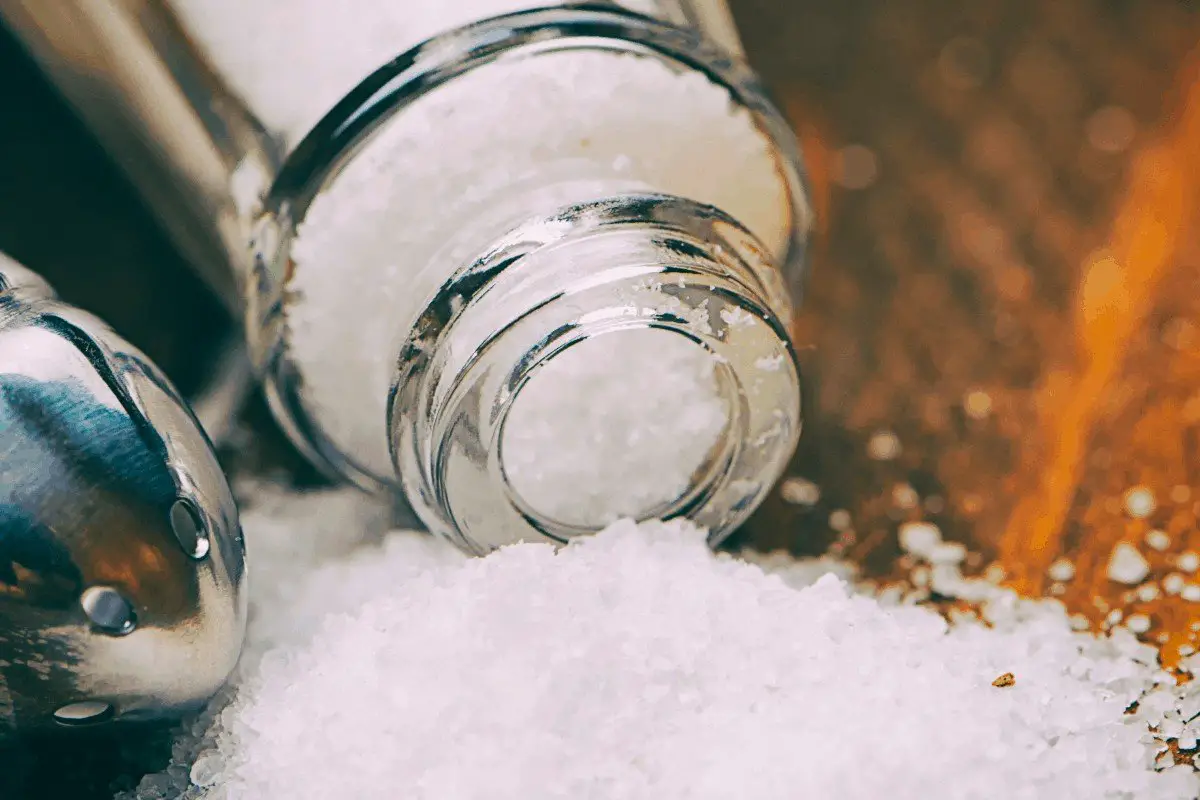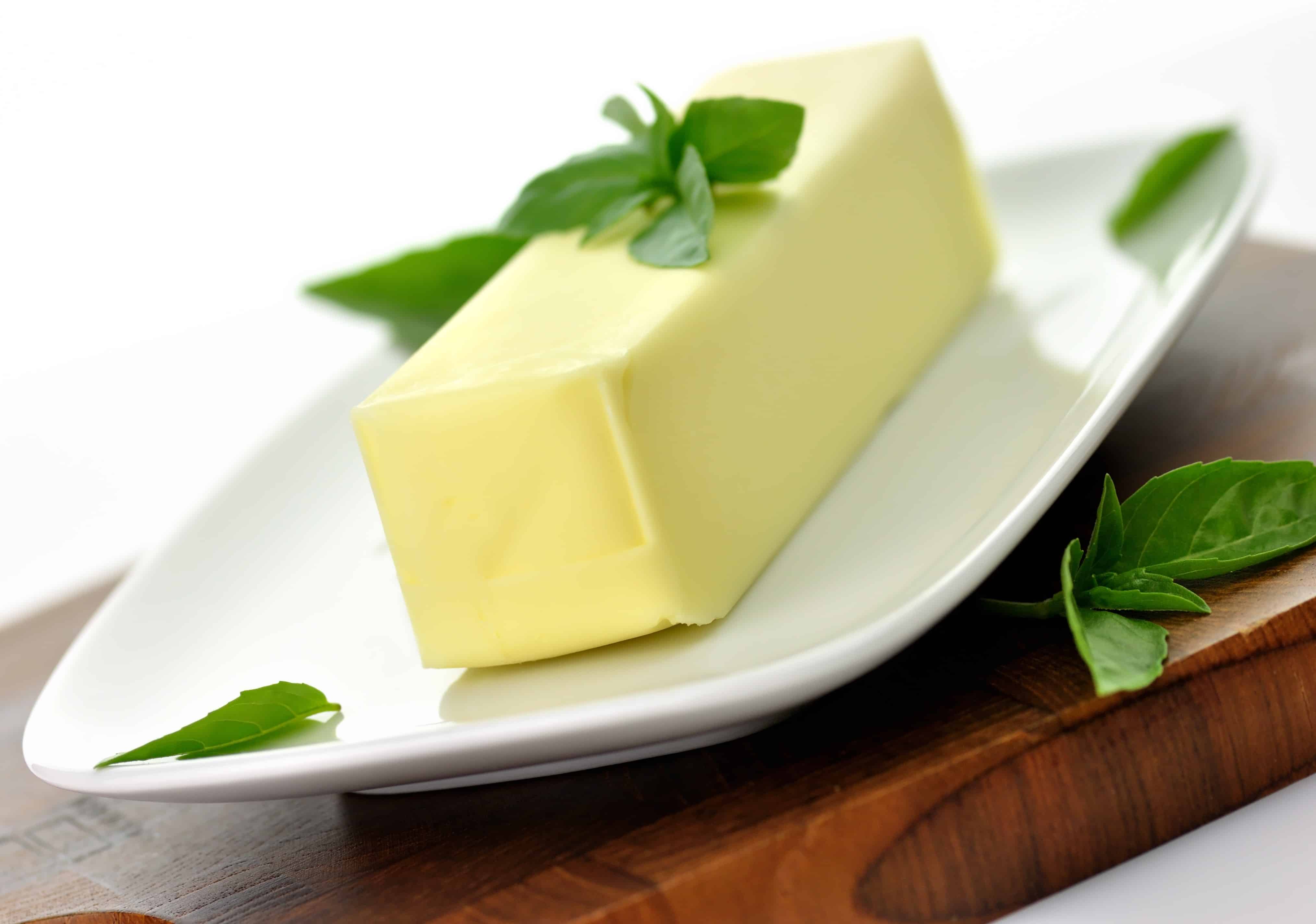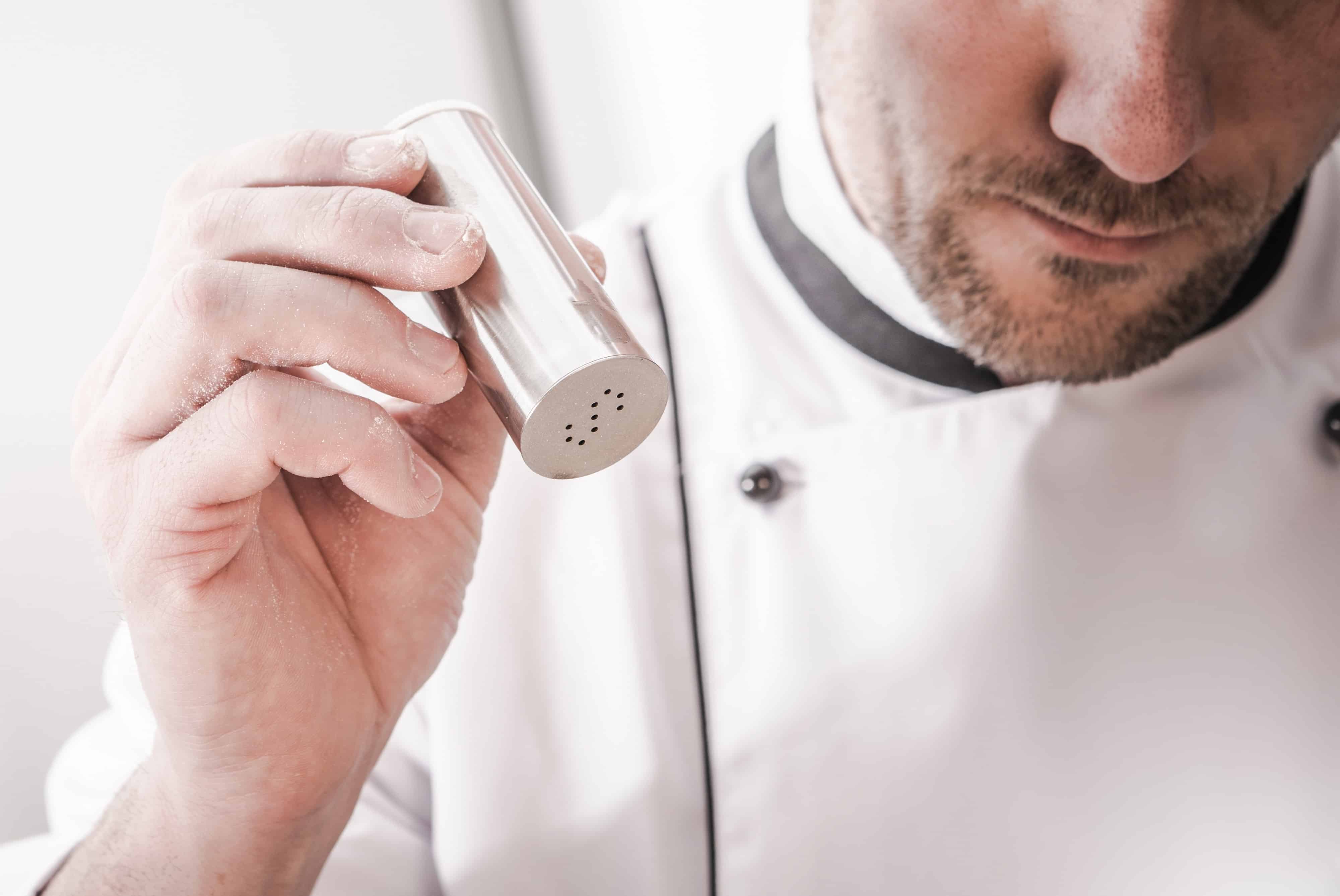Last Updated on February 9, 2023
If you do a lot of baking and cooking, you’ll know that butter is an important ingredient to have on hand. You can buy both salted and unsalted butter. If you’ve ever bought salted butter, you’ve likely wondered: how much salt is in a stick of butter?
Butter plays an important role in providing flavor and texture to dishes. Both salted butter and unsalted butter have their advantages. Salted butter is typically used in cooking savory dishes and unsalted butter is generally used for baking desserts.
Understanding the Salt Content in Butter
Salt, oh salt! It’s the humble yet essential ingredient that can make or break the flavor of our favorite dishes. But did you know that too much of this flavor enhancer can be harmful to our health? That’s why understanding the salt content in our food, including butter, is crucial.
First of all, let’s talk about why salt is used in butter. Well, it’s simple – salt enhances the flavor of butter and makes it taste better. However, did you know that the amount of salt in butter varies substantially depending on the brand? This implies that even though two sticks of butter look identical, they might taste vastly different.
Now, let’s talk about why too much salt is not good for our health. Excessive salt consumption can result in high blood pressure, which is a major risk factor for heart disease and stroke. The World Health Organization suggests that we restrict our daily salt intake to less than 5 grams or roughly one teaspoon. Precisely because of that, it’s important to choose butter with a lower salt content to keep our hearts healthy.
How to Read Butter Nutrition Labels?
Have you ever stood in the dairy aisle, staring at all the different sticks of butter, wondering which one to choose? And then, once you have made your selection, have you ever taken a closer look at the label and felt completely lost in a sea of information? Well, fear not! Reading butter nutrition labels can be a breeze if you know what to look for.
First and foremost, let’s talk about the serving size. This is the amount of butter that the nutritional information is based on. Therefore, if the serving size is one tablespoon and you want to use two tablespoons, double all of the numbers given on the label.
The second session we will go over is fat content. As you probably already know, butter is known as a high-fat product, and although it is good to have some healthy fats in our diet, we also need to be aware of how much fat we take into our bodies. Also, keep an eye on the saturated and unsaturated fat intake. Considering saturated fats might boost our cholesterol levels, it is advisable to buy butter with a reduced saturated fat content.
Finally, let us discuss the salt content. As previously indicated, it is critical for our health to choose butter with a reduced salt level. The quantity of salt in each serving is normally labeled in grams, so keep an eye on that and compare different brands to locate the one with the lowest salt content.
Now that you know all this, let’s find out how much salt is in a stick of butter, shall we?
How Much Salt is in Salted Butter?
One of the disadvantages of using salted butter is that there is not a certain amount of salt that is used. Each brand varies on how much salt they add to butter. This can make it difficult when using salted butter, as you may not know how much salt you are adding to your recipe.
Some brands have up to double the amount of salt than other brands. This can make things tricky when you are making a recipe where salt content matters. This large difference in salt content can make a difference in certain recipes.
The varying amount of salt in salted butter can also be problematic if you are trying to control your salt intake. You have to pay close attention to the nutrition facts listed on the box of butter to get an idea of how much salt a serving contains.
According to the National Dairy Council, a stick of salted butter generally contains 1.6-1.7 percent salt. It is up to each brand to decide how much salt they add to their butter. There are no restrictions set in place on the minimum or maximum amount of salt salted butter can have.
On average, one stick of butter contains slightly more than ⅓ teaspoon of salt, two sticks of butter contains ¾ teaspoon of salt, and 4 sticks of butter contain 1 ½ teaspoon of salt. This typically works out to every gram of butter containing eight milligrams of salt.
How many salts are in 1/2 Cupof Salted Butter?
Ah, salted butter, is the staple ingredient in many of our favorite dishes (and we assume yours too). However, we can’t help but wonder how much salt is in this delicious spread. Well, buckle up because we are about to find out!
Things look like this: depending on the brand itself as well as the level of saltiness, one-half cup of salted butter contains roughly 1 to 2 tablespoons of salt. To put that in context for easier understanding, the recommended daily intake of salt is roughly one teaspoon, therefore using half a cup of salted butter in one dish might already get us near to our daily limit!
Wondering why there is so much variation between brands, that is, in other words, why are certain products saltier than others? Well, to be honest, the matter is very simple. The amount of salt added to butter is mostly for taste. Brands may add more salt to improve the flavor of their butter, or less salt to appeal to consumers who want a softer flavor.
Accordingly, the most important thing is to do your best to choose a brand with lower salt content and use it in moderation to keep your salt intake in check.
How Much Salt is in 1 Pound of Salted Butter?
If you enjoy the rich flavor that butter adds to meals, we must agree that you aren’t the only one! However, don’t close your eyes since you need to know how much salt is in your trusty ingredient. So, let’s find out how much salt is in one pound of salted butter!
One pound of salted butter contains about 4 to 8 teaspoons of salt, depending on the brand and the level of saltiness. That’s a lot of salt! However, as previously said, there is no need to totally shun it because butter can be a both tasty and nutritious ingredient when used in moderation and with awareness of its salt level.
As a result, whether you are a seasoned chef or a novice cook, consider the salt level of your butter and attempt to choose a brand with reduced salt content. Use it sparingly and seek alternate spreads for a more balanced diet.
Now that you know how much salt is in a stick of butter, let us address another concern that many of you have. What do you think? Let’s get into the technicalities!
Can I Salt Unsalted Butter?
Do you know what unsalted butter is sometimes called in kitchens? – The blank canvas of the butter world. It’s plain, it’s versatile, and it allows you great control over the flavor of your food. But what if you want your butter to have a bit extra oomph? Is it possible to season unsalted butter with salt? Although many of you might think otherwise, the answer is unequivocal: “Yes, you can!”
Salting unsalted butter is actually a common practice in the kitchen, especially for those who love to bake, since it can improve the taste of baked goods and add a savory note. The number of pinches of salt you use is entirely dependent on your own preferences, but 1/4 to 1/2 teaspoon of salt per stick of unsalted butter is a decent starting point.
That’s it, now you know how much salt is in a stick of butter, and how much to add if you feel the need.
When to Use Salted Butter Versus Unsalted Butter
Since salted butter varies by brand and there is not always a way to tell how much salt a particular brand uses, it can be tricky to use salted butter when making dishes. Though some recipes it doesn’t matter if you use slightly more salt, it can affect certain ones.
Butter provides a rich and creamy texture to recipes. It is often a key ingredient in many desserts and is commonly used in savory dishes as well. If you do a lot of baking you will likely go through a lot of butter.
Butter can even serve as a liquid or leavening agent in baked goods. When used in cooking, butter can provide fat and additional flavor.
Salted butter is great for adding to pasta, sauteing meats and vegetables, spreading on bread, and making sauces. In these types of dishes, it is okay for the salt range to slightly vary. Using salted butter will help enhance the flavor of savory dishes.
Generally, you want to avoid using salted butter for making desserts. Since the salt content of butter varies from brand to brand, it can have an impact on how your baked goods will taste. Many recipes for desserts will specifically call for unsalted butter.
Salt is important for bringing out the flavors in food. However, too much salt in desserts will give them a savory rather than sweet taste. This is why it is recommended to use unsalted butter for desserts and then add salt to get the right amount the recipe calls for.
If a recipe doesn’t specify salted or unsalted butter, it is generally okay to use either one. If you want to play it safe, you can always stick to unsalted butter if you are unsure. Sometimes you may see recipes refer to salted butter as sweet cream butter and unsalted butter as sweet butter.
Substituting
If you are worried about your salted butter containing too much salt, you can use unsalted butter and then add the desired amount of salt you want. This allows you to have ultimate control over how much salt is in your butter.
To substitute salted butter for unsalted butter, reduce the amount of salt that the recipe calls for by ¼ teaspoon of salt for every stick. If you have unsalted butter and need salted butter, add ¼ teaspoon of salt for every stick.
Advantages of Salted Butter
Though many people prefer to use unsalted butter, salted butter does have some advantages. Salted butter can typically last around four months to five months when stored in the refrigerator. It can last up to nine months when stored in the freezer.
The salt acts as a preservative, which is why salted butter lasts longer than unsalted butter. Some people do leave their salted butter out covered at room temperature, but it is best to store it in the fridge or freezer to preserve its freshness and give it longer shelf life.
Salted butter is a great choice if you like to use butter as a spread on things such as waffles, pancakes, bread, muffins, and biscuits. It will have more flavor than unsalted butter, making it ideal for adding as a topping.
A Tricky Ingredient
With the amount of salt varying by each brand, using salted butter can be tricky. If you are wanting to know how much salt is in salted butter, you will want to take a look at the nutrition facts to get a better understanding. Typically, salted butter will have around ⅓-¼ teaspoon of salt for every stick.
To get your desserts baked just right, it is ideal to use unsalted butter. Salted butter is a good choice for use as a topping or in savory dishes. However, as long as you make adjustments, you can substitute the two if needed.
Please comment if you have any questions regarding the salt content in salted butter.

Karen is a passionate pastry chef who loves to create delicious baked goods. She has been in the culinary arts for over 10 years, honing her skills and perfecting her craft. Karen is known for her creativity and attention to detail, creating unique desserts that bring a smile to everyone’s face. She is always looking for ways to challenge herself and come up with new recipes that are both tasty and visually appealing. Karen loves to experiment with different flavors and textures, and she is committed to providing the highest quality of products to her customers.



